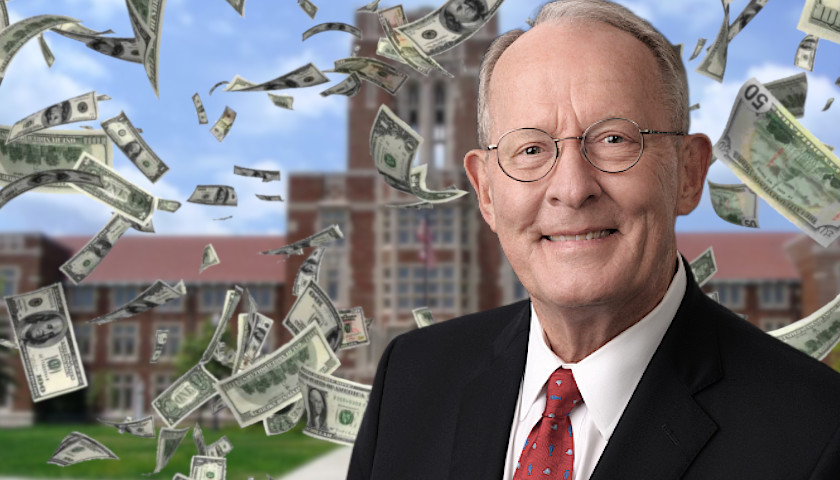by Chloe Anagnos
The debate surrounding the student-debt crisis in America continues to prompt both lawmakers and political commentators to discuss the matter as they search for a way to address the issue. But as expected, whenever policy solutions are debated, the fact that the crisis was manufactured by government intervention itself seldom gets discussed.
The latest solution to get some media attention comes from Senator Lamar Alexander (R-TN), who wants to fix the student-debt problem by taking loan payments straight from debtors’ paychecks.
Much like the idea behind the withholding tax, the automatic-repayment plan would work by requiring employers to deduct federal student-loan payments directly from employees’ paychecks.
To Alexander, the chairman of the Senate Health, Education, Labor, and Pensions Committee, the idea is worth exploring because it would keep borrowers from defaulting or falling behind. With 40 percent of student-loan borrowers expected to default by 2023, this proposal may appeal to many in the federal government. But when a crisis such as this is born out of artificial demand for college education, which inflates the cost of pursuing a degree, wouldn’t this purported solution add more fuel to the fire?
The Solution Is Less Government
While most critics of Alexander’s proposal will obviously focus on how the automatic-payment system will exert greater pressure on lower-income borrowers, that is far from the only problem with his idea.
Student loans are heavily subsidized. As a result, the price of education soars, thanks to the artificially high demand for college degrees that the easy access to loans creates. But what’s perhaps even more concerning is that when a student takes on loans, especially federal ones, the government doesn’t take default risk into account.
So a borrower with a bad credit history or no credit history at all has as much of a chance of getting a federal or subsidized loan as someone who might be more likely to repay their debt in the future. Furthermore, students seeking degrees that will lead to jobs that are in high demand or that lead to higher wages, such as engineering, shouldn’t be seen as a high risk to the lender whereas loans to English, history, or philosophy majors should. But because the government is in control of this process, and the goal has never been to help but to push a false narrative that government is here to defend the supposed right to education, constraints that would exist in a free market suddenly disappear.
Over time, the very denial of how economics works take its toll, as people who wouldn’t have pursued higher education in the first place are now stuck with debt they can’t afford. But as we see a greater number of people defaulting on their payments, government officials have only one answer to the problem, and that is making the government even more involved in the process.
To really fix this issue, there’s only one option, and that is to get government completely out of the student-loan business. After all, the market will only heal itself once it is allowed to restore the pricing mechanism, and that will only happen if schools are responding to real-world demand.
If Alexander is serious about protecting the federal government’s assets while helping students keep up with their loan payments, he must first understand that it is because of bad policies that we now have this mess. Only by identifying the real problem will lawmakers be able to identify an effective solution.
– – –
Chloe Anagnos is AIER’s Publications Manager. She is a writer and digital marketer and has been an AIER contributor since 2017. Her work has been the subject of articles in FOX News, USA Today, CNN Money, and WIRED. She has been a writer, commentator, and panelist for media outlets around the country on subjects like political marketing, campaigning, and social media. Follow @ChloeAnagnos.
Background Photo “University of Tennesee” by Nightryder84. CC BY-SA 3.0.




